- Home
- Kathy Reichs
Déjà Dead
Déjà Dead Read online
“Fans of TV’s CSI: Crime Scene Investigation should be in heaven” (People) stepping into the world of forensic anthropologist Dr. Temperance Brennan, star of Kathy Reichs’s electrifyingly authentic bestsellers.
Her life is devoted to justice—for those she never even knew.
In the year since Temperance Brennan left behind a shaky marriage in North Carolina, work has often preempted her weekend plans to explore Quebec. When a female corpse is discovered meticulously dismembered and stashed in trash bags, Tempe detects an alarming pattern—and she plunges into a harrowing search for a killer. But her investigation is about to place those closest to her—her best friend and her own daughter—in mortal danger.…
“Kathy Reichs knows how to put all [of her] exotic experience into a novel.… Quebec’s own Southern gal give[s] Cornwell a run for the money.”
—Margaret Cannon, Globe and Mail
“What makes Déjà Dead so compelling, in addition to the authoritative descriptions of how a forensic scientist ‘reads’ the story the bones tell, is the character of Brennan—smart, persistent, gutsy, ironic yet vulnerable.”
—Judy Stoffman, Toronto Star
KATHY REICHS, like her fictional creation, Temperance Brennan, is forensic anthropologist for the province of Quebec. She is Vice President of the American Academy of Forensic Sciences, serves on the Canadian National Police Services Advisory Council, and is one of only fifty-six forensic anthropologists certified by the American Board of Forensic Anthropology. A professor of anthropology at the University of North Carolina at Charlotte, Dr. Reichs now divides her time between Charlotte and Montreal. Déjà Dead, her debut novel, brought her fame when it became a New York Times bestseller and won the 1997 Ellis Award for Best First Novel. In 2007 Break No Bones was short-listed for the Ellis Award for Best Novel. Kathy Reichs is the inspiration for the television drama Bones; her latest novel featuring Temperance Brennan is Bones to Ashes. Her website is www.kathyreichs.com.
Cover design by John Vairo Jr.
Cover photograph © 3D4MedicalCom/Getty Images
Author photograph by Marie-Reine Mattera
Register online at www.simonandschuster.com for more information on this and other great books.
Watch BONES on FOX
www.fox.com/bones
TM & © Fox. All Rights Reserved.
TENTH ANNIVERSARY EDITION!
Kathy Reichs took crime fiction by storm a decade ago with this stunning debut novel. Introducing forensic anthropologist Temperance Brennan, Déjà Dead was a #1 international bestseller hailed as “accomplished and chilling” by People, and “great, suspenseful fun” by New York Newsday.
DÉJÀ DEAD
Winner of the Crime Writers of Canada’s Arthur Ellis Award for Best First Novel
“More than a story wrapped around scientific minutiae; it also features a likable heroine in a colorful setting.”
—Diane Turbide, Maclean’s
“I kept coming back for more, because the action takes place in Montreal. I love the Montreal she describes; it looks, warts and all, very much like the Montreal I live in, no matter where she takes us.”
—Benoit Aubin, The Globe & Mail
“Déjà Dead can lie side-by-side with the works of Patricia Cornwell.… Both do a fine job of telling a good, sometimes scary tale.”
—The Washington Times
“Scary enough to keep the lights on and the dog inside. Reichs is that good.”
—Daily News (New York)
“As good as Cornwell at her best.”
—Detroit Free Press
“You’ll be up most of the night” (Entertainment Weekly) with these suspense-charged bestsellers from Kathy Reichs!
BONES TO ASHES
“Entertaining.… Satisfying.… With her usual blend of cutting-edge forensic science, nail-biting suspense, and characters that pop off the page, Reichs has produced another winner.”
—Publishers Weekly
BREAK NO BONES
“A brilliant novel.… Fascinating science.… A must-read.”
—Jeffery Deaver, New York Times bestselling author of The Sleeping Doll
“A rare treat.… Mesmerizing.”
—Ann Rule, New York Times bestselling author of Too Late to Say Goodbye
CROSS BONES
“A spirited rival to The Da Vinci Code … . Reichs is in top form.”
—Sunday Times (London)
“A riveting thriller.… Reichs takes Dan Brown’s religious conspiracy theory one step further.”
—Charlotte Observer (NC)
MONDAY MOURNING
“Breathtaking technical detail.”
—Entertainment Weekly
“The science is downright snazzy, the mystery plenty devious.…”
—Houston Chronicle
BARE BONES
“Right up there with Patricia Cornwell’s early Kay Scarpetta mysteries.… [Tempe’s] dedication, intelligence, dry wit, and femininity really shine through.”
—Booklist
GRAVE SECRETS
“Riveting.”
—St. Louis Post Dispatch
FATAL VOYAGE
“The plot moves with electric force.… Morbid yet captivating.”
—Publishers Weekly
DEADLY DÉCISIONS
“A high-octane forensic thriller.”
—People
DEATH DU JOUR
“Another scary ride through evil past and present. Read it and creep.”
—Mademoiselle
Critics adore Kathy Reichs … and Tempe Brennan!
“Temperance Brennan is the real thing.”
—Newsday (New York)
“The lab lady most likely to dethrone Patricia Cornwell’s Kay Scarpetta.”
—USA Today
“The queen of forensic thrillers.”
—Western Cape City Vision
“Reichs has brought the detective story into the twenty-first century.”
—The Toronto Sun
ALSO BY KATHY REICHS
Bones to Ashes
Break No Bones
Cross Bones
Monday Mourning
Bare Bones
Grave Secrets
Fatal Voyage
Deadly Décisions
Death Du Jour
Thank you for purchasing this Pocket Books eBook.
Sign up for our newsletter and receive special offers, access to bonus content, and info on the latest new releases and other great eBooks from Pocket Books and Simon & Schuster.
or visit us online to sign up at
eBookNews.SimonandSchuster.com
POCKET BOOKS
A Division of Simon & Schuster, Inc.
1230 Avenue of the Americas
New York, NY 10020
www.SimonandSchuster.com
This book is a work of fiction. Names, characters, places, and incidents either are products of the author’s imagination or are used fictitiously. Any resemblance to actual events or locales or persons, living or dead, is entirely coincidental.
Copyright © 1997 by Kathleen J. Reichs
All rights reserved, including the right of reproduction in whole or in part in any form whatsoever. For information address Scribner Subsidiary Rights Department, 1230 Avenue of the Americas, New York, NY 10020
First Pocket Books trade paperback edition October 2007
POCKET and colophon are registered trademarks of Simon & Schuster, Inc.
DESIGNED BY ERICH HOBBING
The Library of Congress Cataloging-in-Publication Data for the hardcover edition is as follows:
Reichs, Kathleen J.
Déjà Dead / Kathleen Reichs.
p. cm.
I. Title.
PS3568.E476345D4 1997
813'.54—dc21 97–2990 CIP
ISBN-13: 978-1-4165-7098-1
ISBN-10: 1-4165-7098-5
ISBN-13: 978-0-6848-3906-6 (ebook)
For Karl and Marta Reichs, the two kindest and most generous people I know.
Paldies par jūsu mīlestību, Vecāmamma un Paps.
Kārlis Reichs 1914–1996
Contents
Acknowledgments
Chapter 1
Chapter 2
Chapter 3
Chapter 4
Chapter 5
Chapter 6
Chapter 7
Chapter 8
Chapter 9
Chapter 10
Chapter 11
Chapter 12
Chapter 13
Chapter 14
Chapter 15
Chapter 16
Chapter 17
Chapter 18
Chapter 19
Chapter 20
Chapter 21
Chapter 22
Chapter 23
Chapter 24
Chapter 25
Chapter 26
Chapter 27
Chapter 28
Chapter 29
Chapter 30
Chapter 31
Chapter 32
Chapter 33
Chapter 34
Chapter 35
Chapter 36
Chapter 37
Chapter 38
Chapter 39
Chapter 40
Chapter 41
Chapter 42
Chapter 43
Excerpt of Bones of the Lost
ACKNOWLEDGMENTS
In an attempt to create accurate fiction, I consulted experts in many fields. I wish to thank Bernard Chapais for his explanation of Canadian regulations pertaining to the housing and maintenance of laboratory animals; Sylvain Roy, Jean-Guy Hébert, and Michel Hamel for their help on serology; Bernard Pommeville for his detailed demonstration of X-ray microfluorescence; and Robert Dorion for his advice on forensic dentistry, bite mark analysis, and proper use of the French language. Last, but far from least, I wish to express my gratitude to Steve Symes for his boundless patience in discussing saws and their effects on bone.
I owe a debt of thanks to John Robinson and Marysue Rucci, without whom Déjà Dead may never have come to be. John brought the manuscript to Marysue’s attention, and she saw merit in it. My editors, Susanne Kirk, Marysue Rucci, and Maria Rejt waded through the original version of Déjà Dead, improving it greatly with their editorial suggestions. A million thanks to my agent, Jennifer Rudolph Walsh. She is amazing.
Finally, on a more personal note, I want to thank the members of my family who read the embryonic work and made valuable comments. I appreciate their support, and their patience with my long absences.
I WASN’T THINKING ABOUT THE MAN WHO’D BLOWN HIMSELF UP. Earlier I had. Now I was putting him together. Two sections of skull lay in front of me, and a third jutted from a sand-filled stainless steel bowl, the glue still drying on its reassembled fragments. Enough bone to confirm identity. The coroner would be pleased.
It was late afternoon, Thursday, June 2, 1994. While the glue set, my mind had gone truant. The knock that would break my reverie, tip my life off course, and alter my comprehension of the bounds of human depravity wouldn’t come for another ten minutes. I was enjoying my view of the St. Lawrence, the sole advantage of my cramped corner office. Somehow the sight of water has always rejuvenated me, especially when it flows rhythmically. Forget Golden Pond. I’m sure Freud could have run with that.
My thoughts meandered to the upcoming weekend. I had a trip to Quebec City in mind, but my plans were vague. I thought of visiting the Plains of Abraham, eating mussels and crepes, and buying trinkets from the street vendors. Escape in tourism. I’d been in Montreal a full year, working as forensic anthropologist for the province, but I hadn’t been up there yet, so it seemed like a good program. I needed a couple of days without skeletons, decomposed bodies, or corpses freshly dragged from the river.
Ideas come easily to me, enacting them comes harder. I usually let things go. Perhaps it’s an escape hatch, my way of allowing myself to double back and ease out the side door on a lot of my schemes. Irresolute about my social life, obsessive in my work.
I knew he was standing there before the knock. Though he moved quietly for a man of his bulk, the smell of old pipe tobacco gave him away. Pierre LaManche had been director of the Laboratoire de Médecine Légale for almost two decades. His visits to my office were never social, and I suspected that his news wouldn’t be good. LaManche tapped the door softly with his knuckles.
“Temperance?” It rhymed with France. He would not use the shortened version. Perhaps to his ear it just didn’t translate. Perhaps he’d had a bad experience in Arizona. He, alone, did not call me Tempe.
“Oui?” After months, it was automatic. I had arrived in Montreal thinking myself fluent in French, but I hadn’t counted on Le Français Québecois. I was learning, but slowly.
“I have just had a call.” He glanced at a pink telephone slip he was holding. Everything about his face was vertical, the lines and folds moving from high to low, paralleling the long, straight nose and ears. The plan was pure basset hound. It was a face that had probably looked old in youth, its arrangement only deepening with time. I couldn’t have guessed his age.
“Two Hydro-Quebec workers found some bones today.” He studied my face, which was not happy. His eyes returned to the pink paper.
“They are close to the site where the historic burials were found last summer,” he said in his proper, formal French. I’d never heard him use a contraction. No slang or police jargon. “You were there. It is probably more of the same. I need someone to go out there to confirm that this is not a coroner case.”
When he glanced up from the paper, the change in angle caused the furrows and creases to deepen, sucking in the afternoon light, as a black hole draws in matter. He made an attempt at a gaunt smile and four crevices veered north.
“You think it’s archaeological?” I was stalling. A scene search had not been in my pre-weekend plans. To leave the next day I still had to pick up the dry cleaning, do the laundry, stop at the pharmacy, pack, put oil in the car, and explain cat care to Winston, the caretaker at my building.
He nodded.
“Okay.” It was not okay.
He handed me the slip. “Do you want a squad car to take you there?”
I looked at him, trying hard for baleful. “No, I drove in today.” I read the address. It was close to home. “I’ll find it.”
He left as silently as he’d come. Pierre LaManche favored crepe-soled shoes, kept his pockets empty so nothing jangled or swished. Like a croc in a river he arrived and departed unannounced by auditory cues. Some of the staff found it unnerving.
I packed a set of coveralls in a backpack with my rubber boots, hoping I wouldn’t need either, and grabbed my laptop, briefcase, and the embroidered canteen cover that was serving as that season’s purse. I was still promising myself that I wouldn’t be back until Monday, but another voice in my head was intruding, insisting otherwise.
• • •
When summer arrives in Montreal it flounces in like a rumba dancer: all ruffles and bright cotton, with flashing thighs and sweat-slicked skin. It is a ribald celebration that begins in June and continues until September.
The season is embraced and relished. Life moves into the open. After the long, bleak winter, outdoor cafés reappear, cyclists and Rollerbladers compete for the bike paths, festivals follow quickly one after another on the streets, and crowds turn the sidewalks into swirling patterns.
How different summer on the St. Lawrence is from summer in my home state of North Carolina, where languid lounging on beach chairs, mountain porches, or suburban decks marks the season, and the lines between spring, summer, and fall are difficult to determine without a calendar. This brash vernal rebirth, more than the bitterness of winter, had surprised me my
first year in the North, banishing the homesickness I’d felt during the long, dark cold.
These thoughts were drifting through my mind as I drove under the Jacques-Cartier Bridge and turned west onto Viger. I passed the Molson brewery, which sprawled along the river to my left, then the round tower of the Radio-Canada Building, and thought of the people trapped inside: occupants of industrial apiaries who undoubtedly craved release as much as I did. I imagined them studying the sunshine from behind glass rectangles, longing for boats and bikes and sneakers, checking their watches, bitten by June.
I rolled down the window and reached for the radio.
Gerry Boulet sang “Les Yeux du Cœur.” I translated automatically in my mind. I could picture him, an intense man with dark eyes and a tangle of curls flying around his head, passionate about his music, dead at forty-four.
Historic burials. Every forensic anthropologist handles these cases. Old bones unearthed by dogs, construction workers, spring floods, grave diggers. The coroner’s office is the overseer of death in Quebec Province. If you die inappropriately, not under the care of a physician, not in bed, the coroner wants to know why. If your death threatens to take others along, the coroner wants to know that. The coroner demands an explanation of violent, unexpected, or untimely death, but persons long gone are of little interest. While their passings may once have cried out for justice, or heralded warning of an impending epidemic, the voices have been still for too long. Their antiquity established, these finds are turned over to the archaeologists. This promised to be such a case. Please.
I zigzagged through the logjam of downtown traffic, arriving within fifteen minutes at the address LaManche had given me. Le Grand Séminaire. A remnant of the vast holdings of the Catholic Church, Le Grand Séminaire occupies a large tract of land in the heart of Montreal. Centre-ville. Downtown. My neighborhood. The small, urban citadel endures as an island of green in a sea of high-rise cement, and stands as mute testimony to a once-powerful institution. Stone walls, complete with watchtowers, surround somber gray castles, carefully tended lawns, and open spaces gone wild.

 Two Nights
Two Nights The Bone Collection: Four Novellas
The Bone Collection: Four Novellas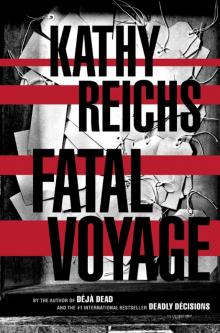 Fatal Voyage
Fatal Voyage 206 Bones
206 Bones Bones to Ashes
Bones to Ashes Terminal
Terminal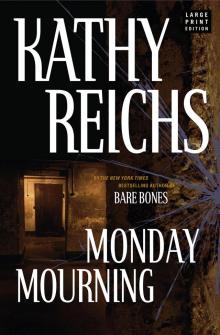 Monday Mourning
Monday Mourning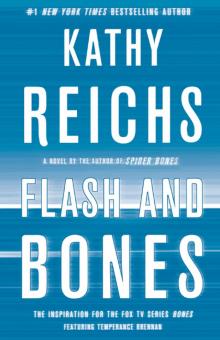 Flash and Bones
Flash and Bones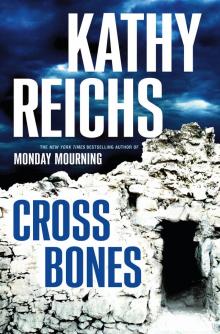 Cross Bones
Cross Bones Devil Bones
Devil Bones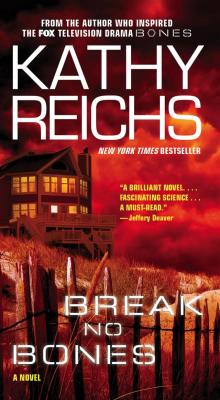 Break No Bones
Break No Bones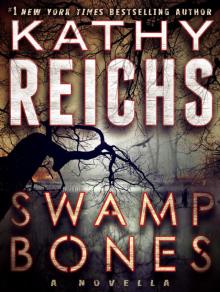 Swamp Bones
Swamp Bones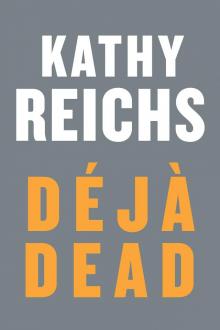 Déjà Dead
Déjà Dead Shock
Shock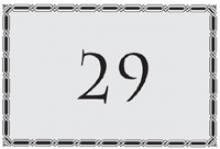 Spider Bones
Spider Bones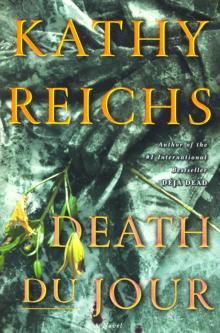 Death Du Jour
Death Du Jour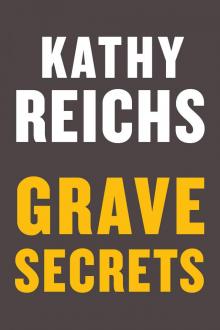 Grave Secrets
Grave Secrets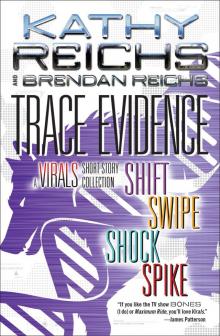 Trace Evidence: A Virals Short Story Collection
Trace Evidence: A Virals Short Story Collection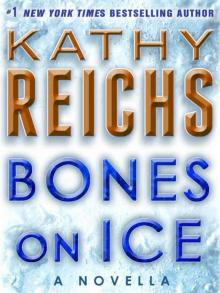 Bones on Ice
Bones on Ice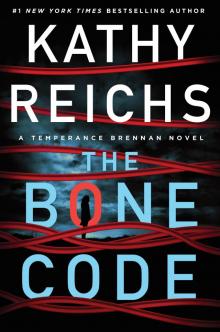 The Bone Code
The Bone Code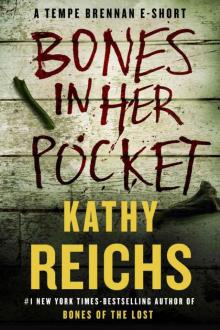 Bones in Her Pocket
Bones in Her Pocket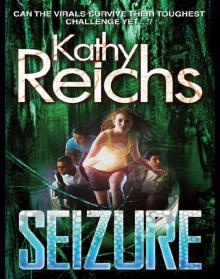 Seizure:
Seizure: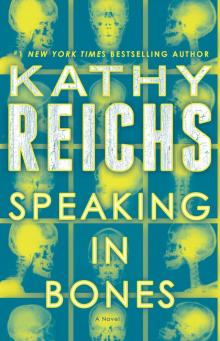 Speaking in Bones
Speaking in Bones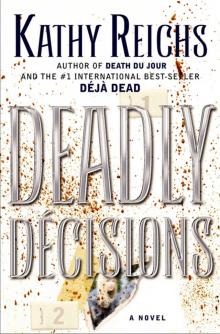 Deadly Decisions
Deadly Decisions Spike
Spike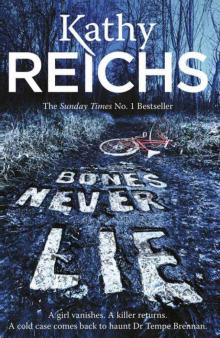 Bones Never Lie
Bones Never Lie Bones of the Lost
Bones of the Lost Virals 03.5 - Swipe
Virals 03.5 - Swipe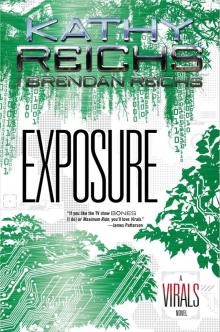 Exposure
Exposure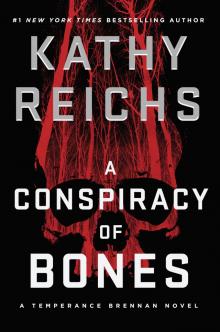 A Conspiracy of Bones
A Conspiracy of Bones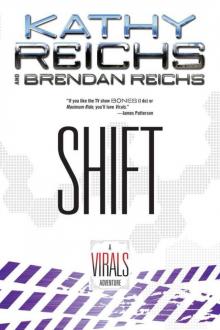 Shift (tory brennan)
Shift (tory brennan)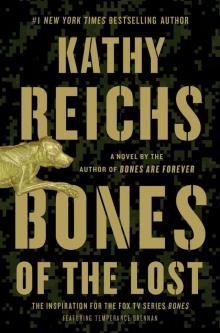 Bones of the Lost: A Temperance Brennan Novel tb-16
Bones of the Lost: A Temperance Brennan Novel tb-16 Virals tb-1
Virals tb-1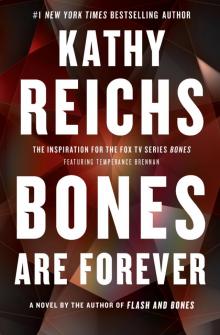 Bones Are Forever tb-15
Bones Are Forever tb-15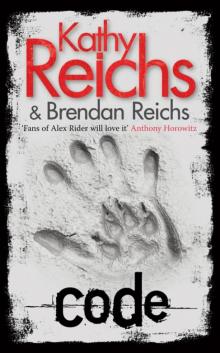 Code tb-3
Code tb-3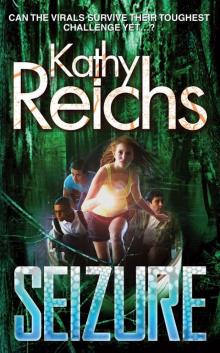 Seizure tb-2
Seizure tb-2 Deadly Descisions
Deadly Descisions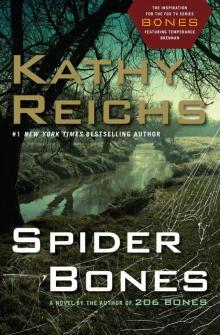 Spider Bones: A Novel
Spider Bones: A Novel